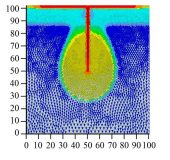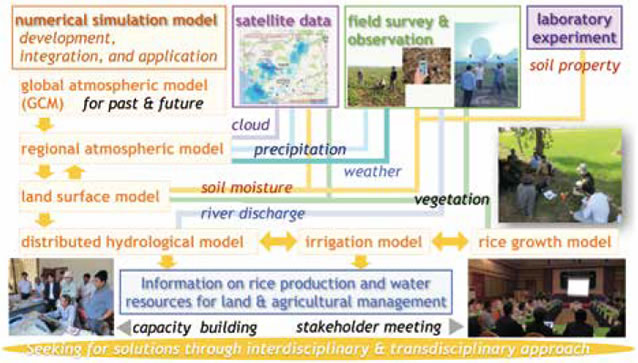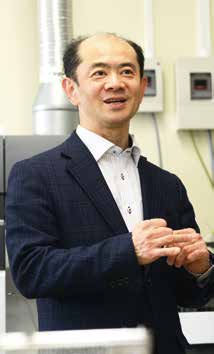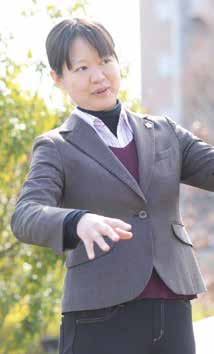Research Area : Agricultural Land Engineering
Installing artificial macropore to enhance infiltration and increase organic matter in soils.
Soil is the largest carbon storage body at terrestrial area. Our previous research showed that macroporous soils conduct surface water without clogging and that bypass flow by macropores segregated organic matter from the surface. Organic matters will be effectively conserved by these physical processes, which contributed greatly to carbon storage as well as bio-chemical processes.
Figure Rainfall was effectively conducted by artificial macropore which contributed to organic matter conservation.

Linear Macropore Installation for Reducing Red-soil Erosion at Sugarcane Field.
Red-soil erosion in sugarcane fields has been reported as a significant agricultural and environmental problems in Ishigaki Island in Okinawa, where such erosion has led to loss of nutrient-rich agriculture soil and also negatively impacted coral reefs. We introduced linear-macropore to the field. The result showed that the erosion almost cancelled the conservative land management and installation of linear macropre reduced surface water and erosion amount to 1/7.
Figure Surface water caused by heavy rain removes nutrient rich surface soil, but macropore structure reduces them greatly.

Observation and Modelling of Soil – Plant – Atmosphere Interaction for Sustainable Land Management
My research interest is “soil-plant-atmosphere interaction” in regional to country scale: how land surface condition affects local rainfall and climate through water and energy fluxes between land and atmosphere. Current research topics are (i) estimation of pedotransfer function and dielectric behavior of soils in regional scale to improve the algorithm of microwave satellite remote sensing of soil moisture; (ii) development of an integrated system of remote sensing, field observation, and numerical model simulations (data assimilation) for environmental monitoring & projection; (iii) process-based study on the mechanism of the soil-plant-atmosphere interaction; (iv) assessment of land-use change and global warming on food production and water resources; etc. Research methodology involves field survey, in-situ observation, laboratory experiment, satellite remote sensing, and numerical model development & simulations. Capacity building and implementation into the society especially in the developing countries are also the key.





